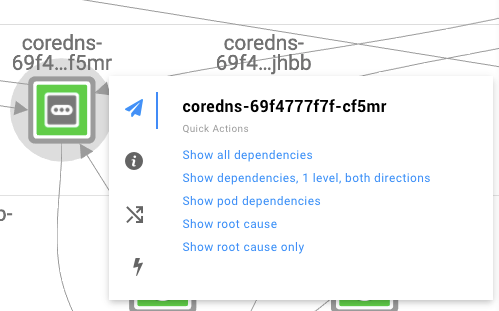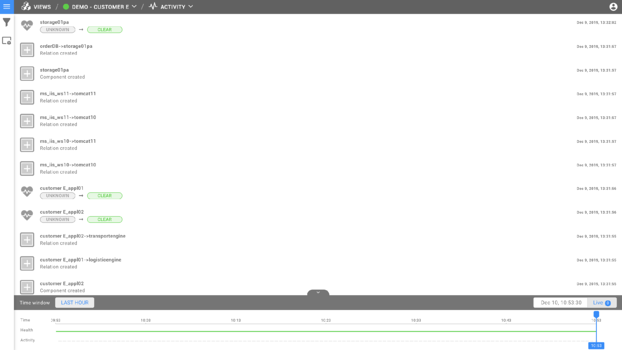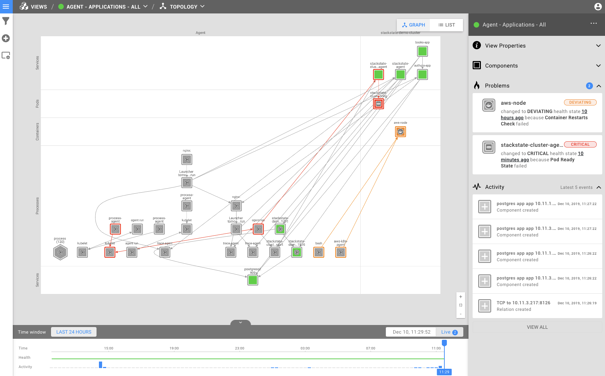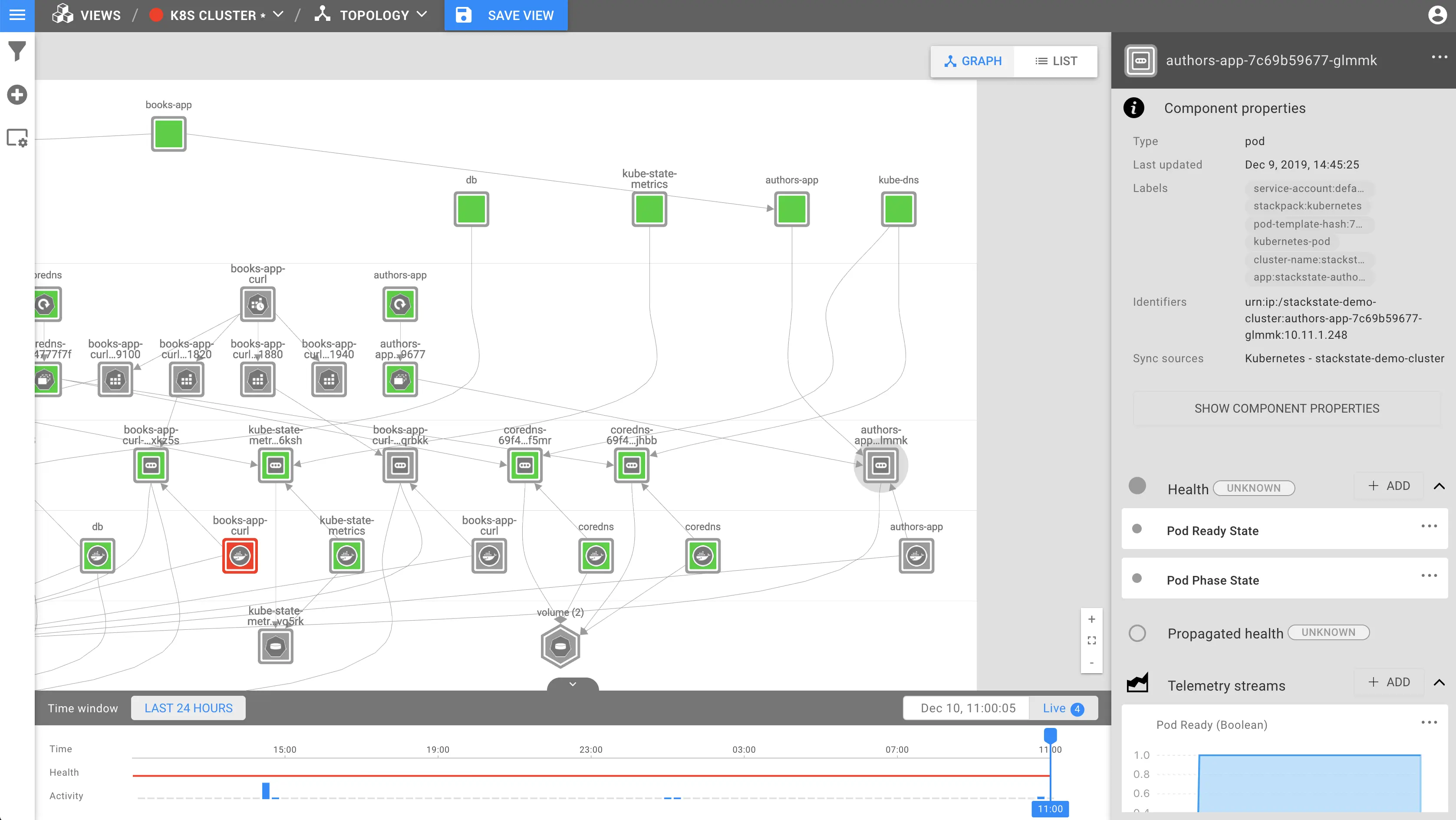In the last couple of months, we’ve been working really hard to make our next-gen monitoring and AIOps platform even better than it already is. We're always collecting valuable feedback where and whenever we can to make our product better. The end result is a fresh, new and improved version of StackState. In this blogpost we’ll take you through all the new features, integrations and other cool stuff that StackState Version 1.15.0 has like dynamic actions, relation-based grouping, activity perspective, view summary pane, Kubernetes and OpenShift integration and last but definitely not least some out-of-the-box integrations: AWS X-Ray, Cloudera & Microsoft SCOM.
Dynamic actions
A major addition to the StackState platform is our new support for dynamic actions. Dynamic actions make it possible to attach actions to components (e.g. productivity applications, enterprise resource planning (ERP) and customer relationship management (CRM)) in your topology so you can take action on a particular component with a single click. StackState’s dynamic actions enables the following functionality:
Refine your view filter to easily navigate through your topology
Navigate to an external URL
Query the and present the resulting information as a report
Trigger an action on an external system based on the selected component

Relation-based Grouping
In StackState 1.15.0, we improved our industry-leading topology visualization even further. In previous versions, StackState would group components of the same type and state together to improve the readability of the topology graph. However, the information about how those components are connected to each other would get lost in the grouping process. We now include a relation-based grouping function that groups components only when their connections are the same. To illustrate the difference, this is how the grouping looked like prior to 1.15.0:


Kubernetes and OpenShift Support
As you might already know, StackState now also integrates with Kubernetes and OpenShift. This is probably the most important news within the 1.15.0 release. Because of its importance we already dedicated separate blogposts to the Kubernetes and OpenShift integrations but it’s always good to remind you to some of the most important features here as well.
With its new Kubernetes and OpenShift integrations, StackState just became a great choice for Kubernetes monitoring. StackState will help you to:
Get a real-time and always up-to-date picture of your Kubernetes and OpenShift environment, including all pods and services
Automatically detect and visualise connections between containers and their processes so you can see all dependencies
Track all Kubernetes and OpenShift metrics, giving you unprecedented insight into your application health and performance
StackState Kubernetes support is a fully integrated addition to the StackState AIOps platform. This means that you can also see how any of your on-prem or cloud-hosted servers interacts with your Kubernetes or OpenShift containers.

StackState 1.15.0 ships with new versions of the AWS and Kubernetes StackPacks that use the actions to provide a smooth, integrated out of the box experience. For example, you can now navigate directly from any AWS component to the AWS Console for that component.
More integrations
Finally, we've added the following out of the box integrations to StackState 1.15.0. We'll write a special blog post about these integrations which we'll publish later:
AWS X-Ray
Cloudera
Microsoft SCOM


